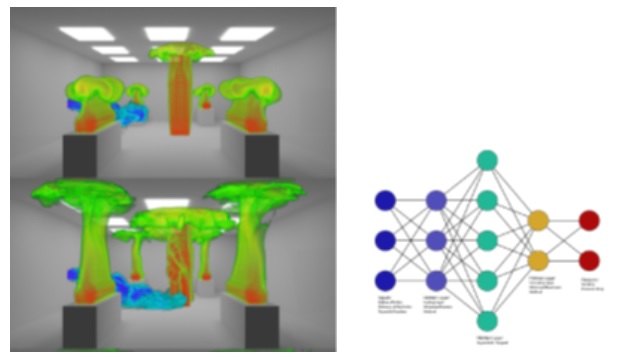Machine learning (ML)-based intelligent CFD simulation for interactive design exploration of built environments
- Academic lead
- Andrew Sleigh, Civil Eng
- Industrial lead
- Bernardo Vazquez, BuroHappold
- Co-supervisor(s)
- Amir Khan, Civil Eng, He Wang, Computing
- Project themes
- Environmental Flows, Underpinning Methods for Fluid Dynamics
Understanding the effect of airflow in indoor environments is of great interest due to its close relationship to occupant’s safety, thermal comfort, energy and infection risk. In hospitals, airflow can distribute pathogens and can pose a significant health hazard. Indoor airflow patterns can be very complicated, and computer simulations are an invaluable tool for understanding their characteristics. During the design phase, computational fluid dynamics (CFD) can enable designers to explore various design scenarios that consider multiple constraints (infection risk, energy efficiency) without compromising the critical factor of indoor air quality (IAQ). However, the complex and dynamic nature of the problem makes it challenging to perform the fluid simulations quickly to explore 100 to 1000s of design options interactively to identify the optimum.
This project will combine GPU-accelerated CFD simulations of flows with a machine learning (ML) algorithm to develop a novel data-driven and interactive physics-aware design optimisation method applied to the built environment. The project offers opportunities for fundamental algorithmic developments, software development, and working on an important application of computational engineering to climate change resilient built environment design. The student will be trained in the physics and modelling of fluid flows, programming GPUs using C++ and CUDA, and modern numerical algorithms of ML.

